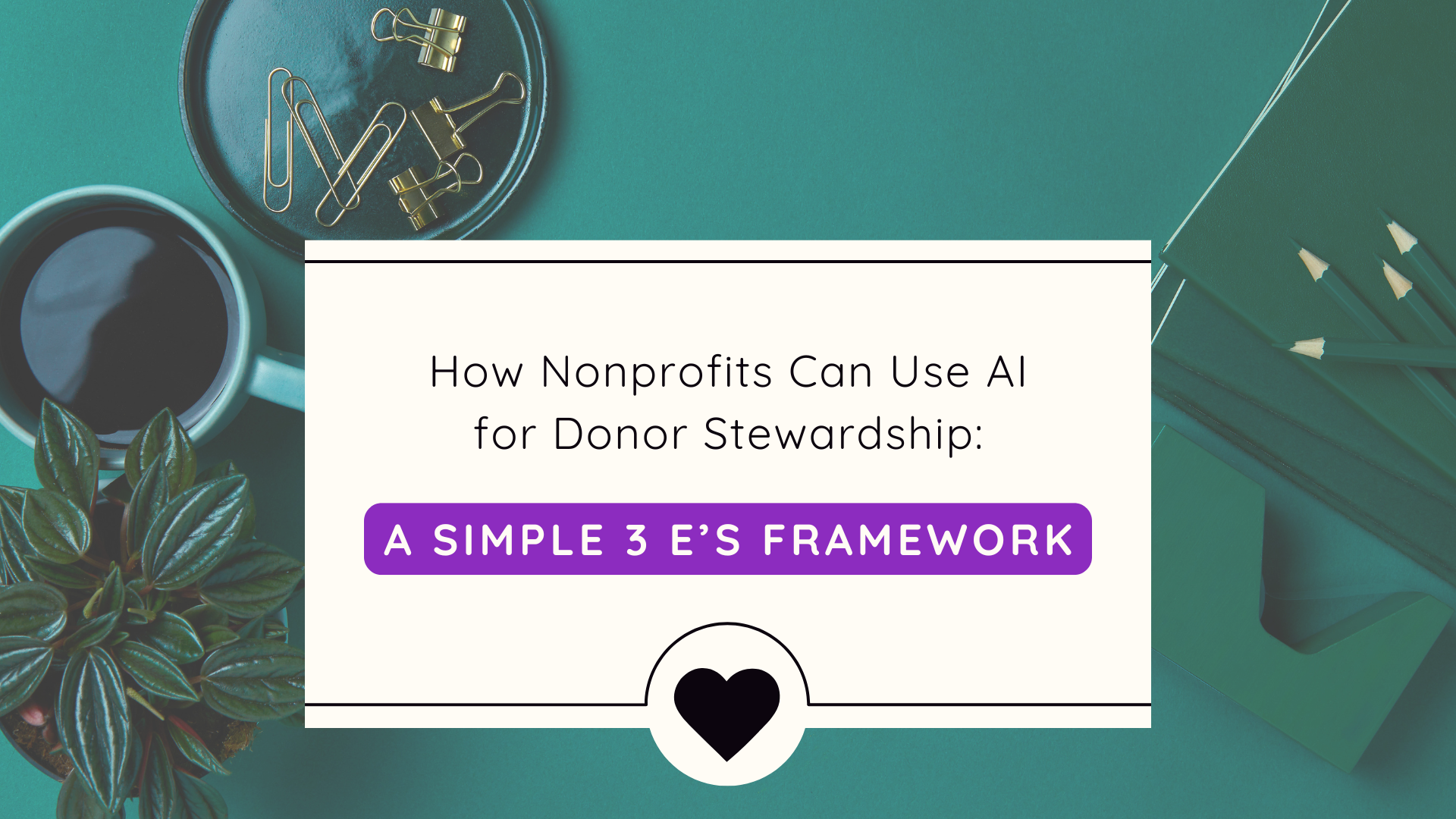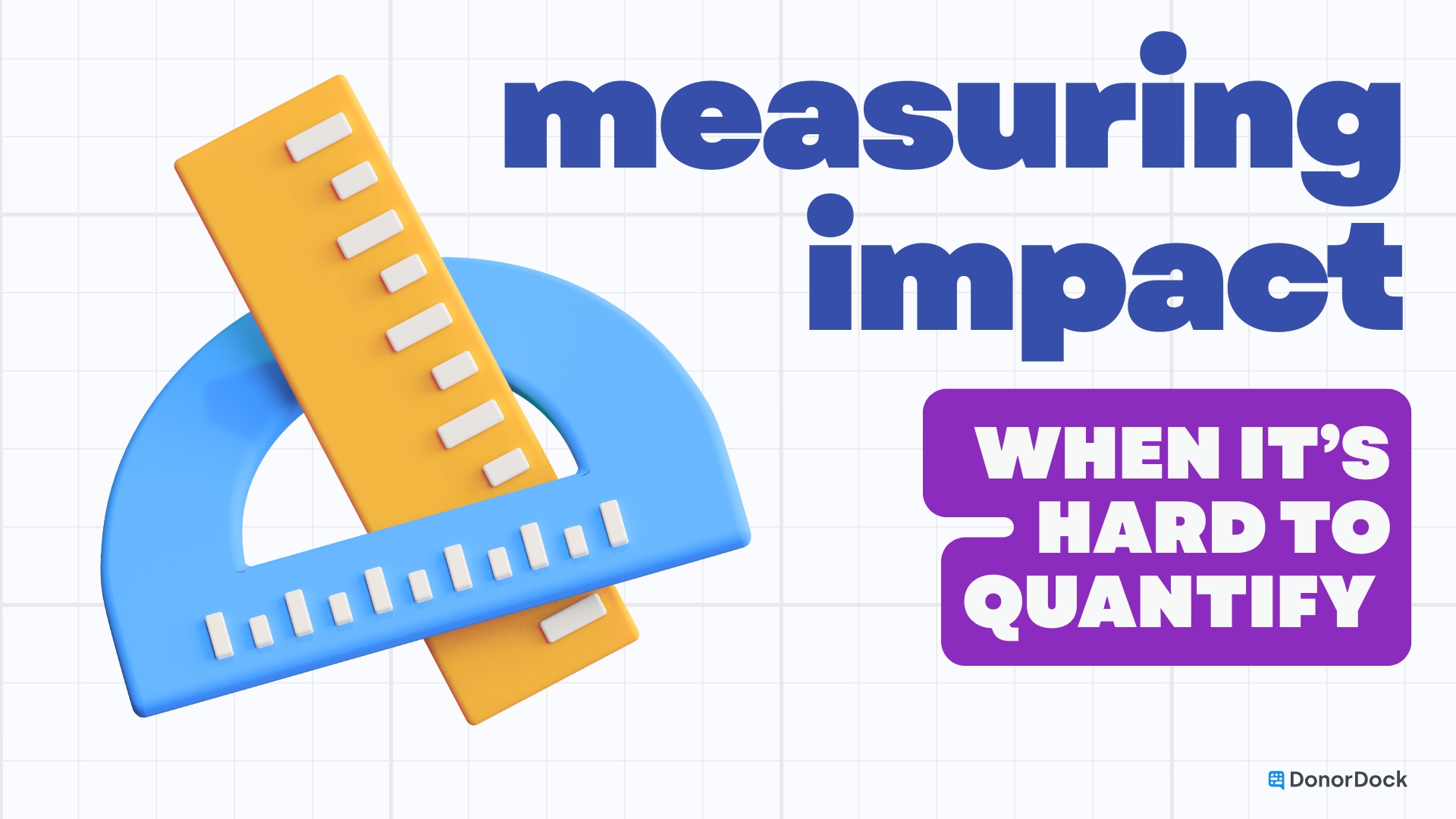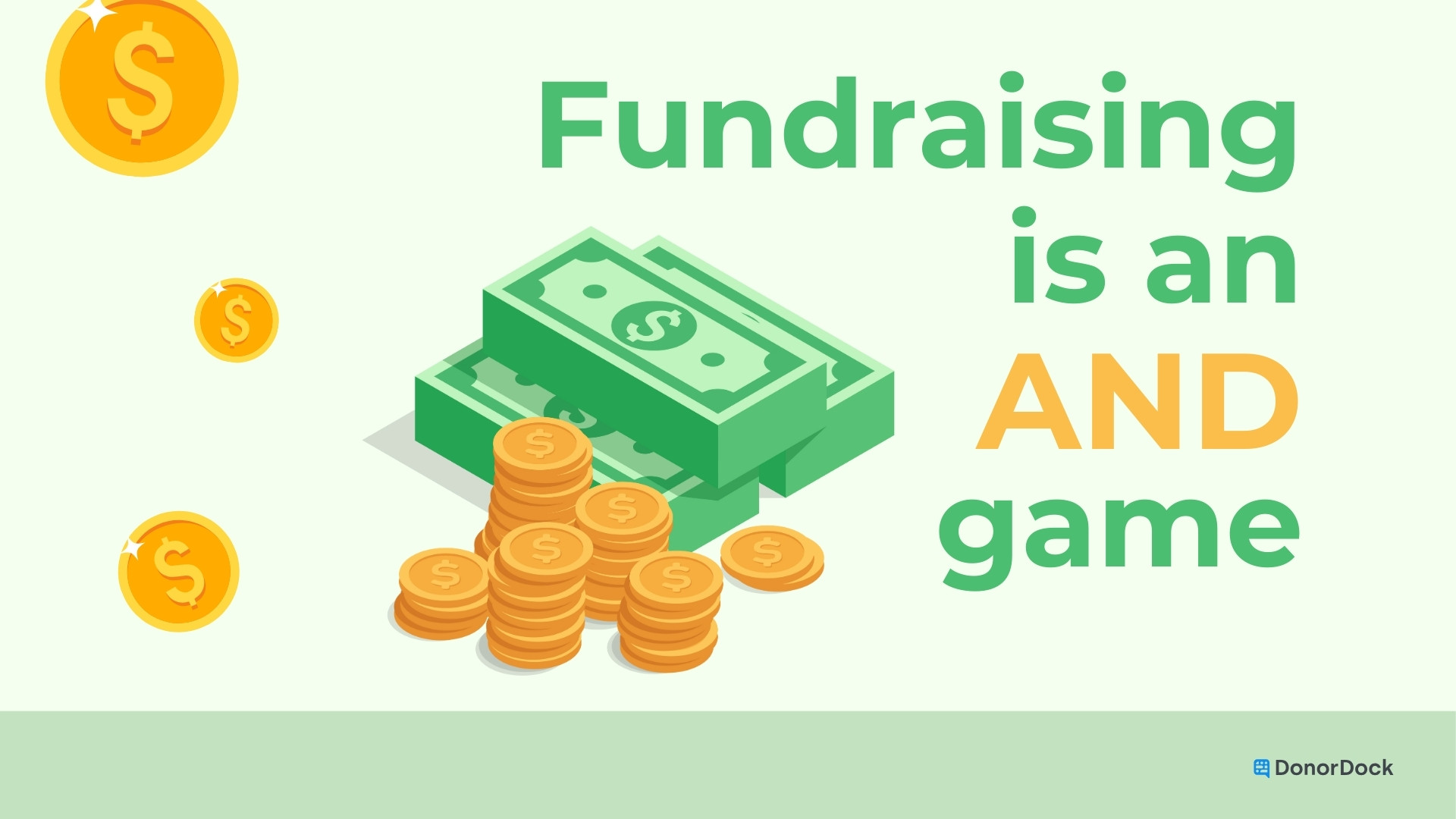Ever wondered why some donors stick around for the long haul, while others give once and you never hear from them again? Understanding the donor lifecycle and where a donor is in their journey with your nonprofit is pivotal to nurturing lasting relationships with your supporters. A donor who feels connected to your nonprofit is more likely to keep showing up and giving to your cause.
When you understand the donor lifecycle, you’re better able to tailor communication to each donor segment. Understanding how donors interact with your nonprofit is pivotal to nurturing lasting relationships with your supporters. This understanding not only helps in tailoring communication but also ensures that each interaction adds value, thereby strengthening relationships over time.
Donor Lifecycle Stages
The stages in a donor lifecycle can be thought of as the various "seasons" a donor goes through in their relationship with your nonprofit. There are many different names or categories that these lifecycles can be broken down into. To keep it simple, we’ll break it down into three categories:
- Donor Acquisition
- Donor Retention
- Stewardship
When mapping your donors' journey with your nonprofit, those lifecycle stages are often broken down further.

Donor Acquisition
Growing awareness and visibility of your nonprofit is an important part of engaging donors in the donor acquisition stage of their lifecycle. Increasing donor acquisition is like planting a garden – you need to prepare the soil, sow the right seeds, and nurture the growth.
To improve this lifecycle stage for potential donors, focus on awareness and consideration.
- Cultivate an Engaging Website: Think of your website as the front porch of your nonprofit's home. Make it welcoming and easy for guests to step in and learn more. Use strong calls to action, like a prominently displayed "Donate" button, and explain the impact of their donation. Ensuring your website is integrated with your nonprofit CRM can make the donation process seamless and trackable.
- Engage Through Multiple Channels: Plant seeds everywhere, not just in one patch. Reach out to potential donors through a variety of channels, including social media, email marketing, direct mail, and events. Diversify your approach to meet people where they are, and always keep the conversation going. Remember, the more touchpoints you have, the more chances you have to connect with potential donors.
- Tell a Compelling Story: Use storytelling to draw potential donors in, make them care, and show them how their contribution can change the narrative. Whether it's through email, social media, or direct mail, a good story with a personal touch can turn a passive reader into an active donor.
Donor Retention
When it comes to the donor retention stage, it’s important to focus on deepening relationships with existing donors.
To engage donors effectively, you need to connect with them regularly. Sending thank you notes, reaching out on birthdays, and engaging donors on the anniversary of their first gift are all great ways to show appreciation for your donors without asking them to give again. A nonprofit CRM that sends Smart Nudges based on your donor data simplifies your outreach efforts, giving you a clear path forward and next steps to take.
Monthly or quarterly nurture emails help donors stay up to date with your nonprofit’s work, build trust, and show donors how they’ve contributed to the community. Consistent touchpoints keep your nonprofit top of mind, which helps foster a sense of connectedness and community.
Stewardship
The stewardship stage of the donor lifecycle, also sometimes called “upgrade”, is the stage where you’re actively working to increase the giving or commitment of an engaged donor.
You’ve invested time over the past year or more to retain and cultivate deep connections with your donors. Now, it’s time to move them towards increasing their time or financial contributions. Upgrading donors can be a challenge because not everyone can give more. However, if they’ve shown they’re committed to your cause, and you've built strong relationships with them, it's the perfect moment to invite them to make a bigger impact.
Improving donor lifecycles
1. A donor journey map
To engage your donors along each stage of their lifecycle, you need to understand their journey with your nonprofit.
What is a donor journey?
Think of the donor journey as the path a supporter walks down with your nonprofit, from the moment they first hear about your cause to the point where they become a dedicated advocate. If the lifecycle is the stage or season that a donor is in, then the donor journey outlines not just the stage a donor is in, but also how your nonprofit interacts with them.
Each donor's journey is unique, and not all supporters will reach every stage. However, understanding these stages can help you craft tailored communications and engagements that foster deeper relationships with your donors.
A well-mapped donor journey clarifies the path from initial awareness in the Donor Acquisition stage to the long-term loyalty of a donor who has been stewarded well.
To map out your nonprofit’s donor journey, check out this free Donor Journey Map Template

2. Gather feedback to refine donor lifecycles
It’s important to understand what works and what doesn't in each stage of the donor lifecycle. That's where feedback from your donors comes into play. Julia Devine, of Devine Parker Consulting, suggests conducting informational interviews with donors as a powerful tool for gathering this invaluable insight.
“Reach out to your network, and ask for 15-20 minutes of their time to do an information interview. Then you copy and paste the transcript into a Google Doc. You can pull out these really excellent nuggets of information that is going to start helping you to build up a portfolio of great feedback, and then that's going to help you guide your own journey building.”
-Julia Devine on Beyond the Donation ep. 26
Why go through the effort? It's like getting a roadmap directly from those navigating the path you've laid out. Let your donors speak to their experience, not just with your nonprofit but with other nonprofits as well. You’ll get useful information to help you shape personalized interactions with your constituents.
To get started, think about crafting questions that dig deep into their experiences. Seeking out genuine feedback, you're after the kind of honesty that can spark real transformation.
3. Use key metrics to measure success
Engagement Metrics
Engagement metrics like open rates and click-through rates shed light on how compelling your content is to recipients. High open rates suggest that your subject lines resonate with donors, while high click-through rates show that the content within emails encourages further action.
Delving into the specifics of content that spurs greater interaction offers insights for polishing upcoming communication tactics. Resources such as HubSpot’s Email Marketing Guide provide tips for crafting effective messages.
Donor Conversion Rates
Donor conversion rates refer to the number of people who come to your donation page and follow through on giving. Conversion rates are the backbone of evaluating your donor journey's effectiveness. A low conversion rate might indicate that there's a disconnect between your messaging and what motivates your audience to give.
To improve these donor conversion rates, check out this guide on donation page optimization.

4. Remember the journey is linear
Unlike a circular lifecycle, where donors continuously cycle through various stages, think of a donor's journey as a road trip rather than a merry-go-round. It's more of a straight path from when they first learn about your cause to building a deeper connection or eventually lapsing.
At the outset, donors may be introduced to an organization through awareness-building efforts or initial donations. As their relationship with the nonprofit deepens, they may become more involved, increasing their level of support over time.
However, it's important to acknowledge that this linear trajectory isn't necessarily rigid; donors may move back and forth between stages or exit the lifecycle altogether. Nonetheless, understanding the linear nature of the donor lifecycle can help nonprofits tailor their strategies to effectively engage donors at each stage of their journey.
5. Choose the right technology solutions
Finding technology that fits your nonprofit's needs can feel like navigating a maze. But the right tools can simplify giving while simultaneously deepening bonds with your supporters.
To start, assess what aspects of the donor journey could use improvement. Is it communication? Donation processing? Data analysis? Pinpointing these zones allows you to hone in on strategies tailored for overcoming distinct obstacles. By using an all-in-one nonprofit CRM, you can simplify your donor management, donation pages, and communication.
Your chosen technology should easily sync with existing systems to ensure seamless data flow and minimize data siloes.
Conclusion
Understanding the donor lifecycle is like having a roadmap for building strong and lasting relationships with your supporters. It's what sets apart those donors who stick around for the long haul from those who give once and disappear.
By grasping where a donor is in their journey with your nonprofit, you can tailor your communication and engagement efforts to meet their needs and preferences.
Whether you're focused on acquiring new donors, retaining existing ones, or stewarding committed supporters towards deeper engagement, knowing the stages of the donor lifecycle empowers you to guide each donor along their unique path.
So, remember, the journey may not be circular, but by understanding its linear nature and leveraging the right strategies and technologies, you can navigate it with confidence, ultimately fostering stronger connections and greater impact for your cause.
Are you using a donor development platform that fits your needs and serves up actionable steps to help you cultivate better donor relationships?
Nurture your donor relationships with DonorDock, an easy-to-use Donor Management Platform built for nonprofits like yours.












